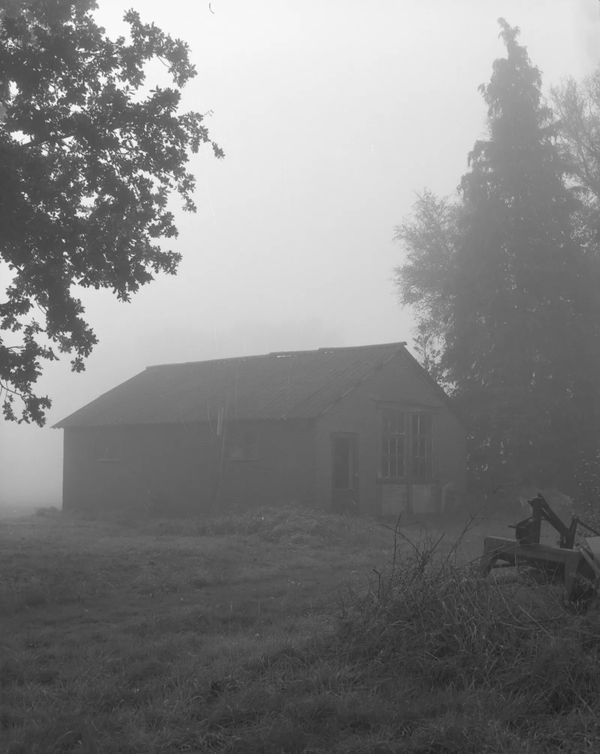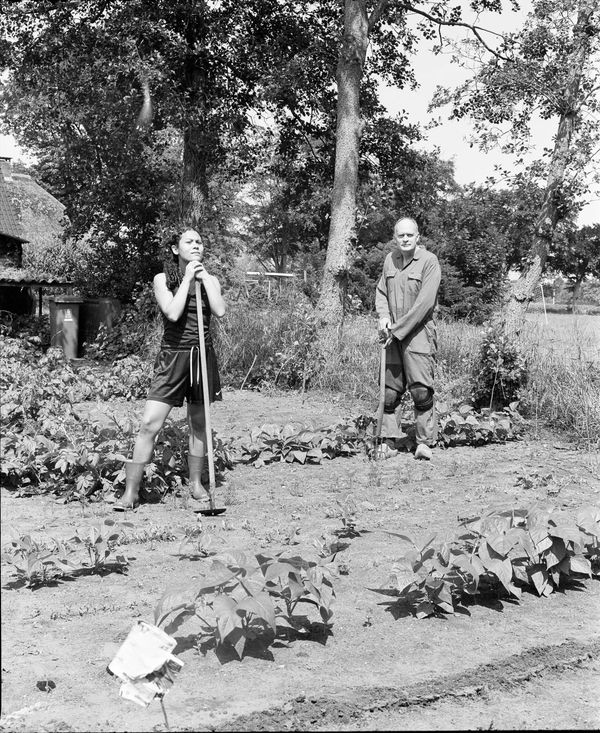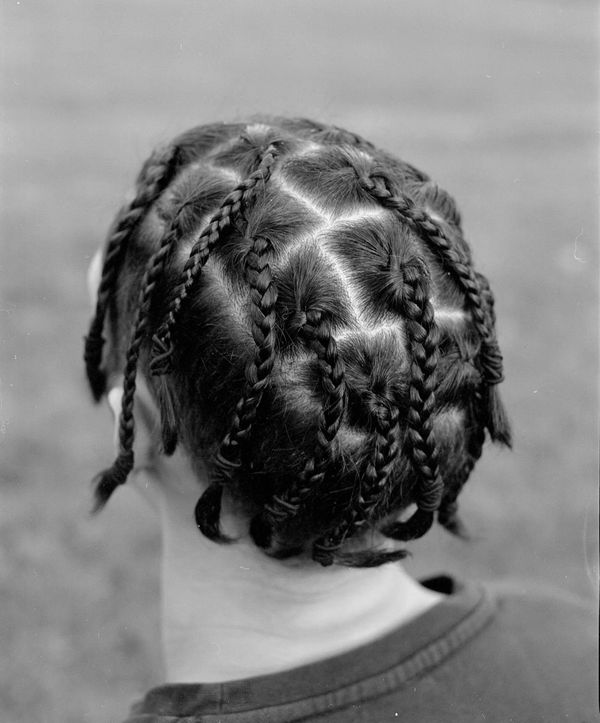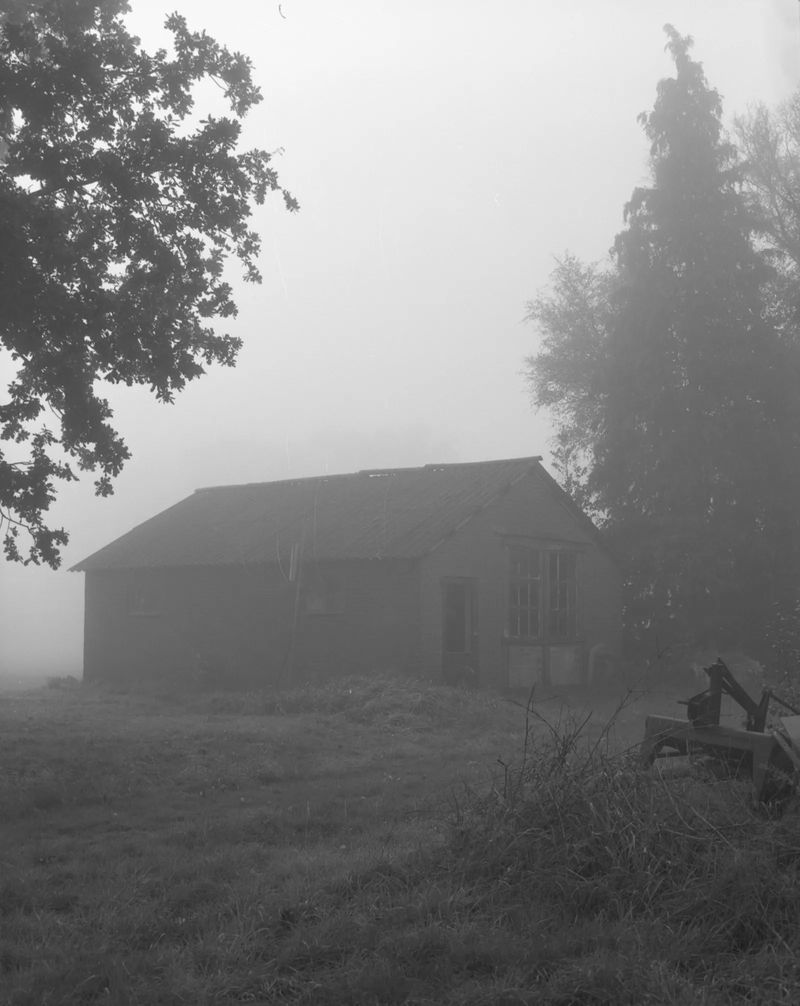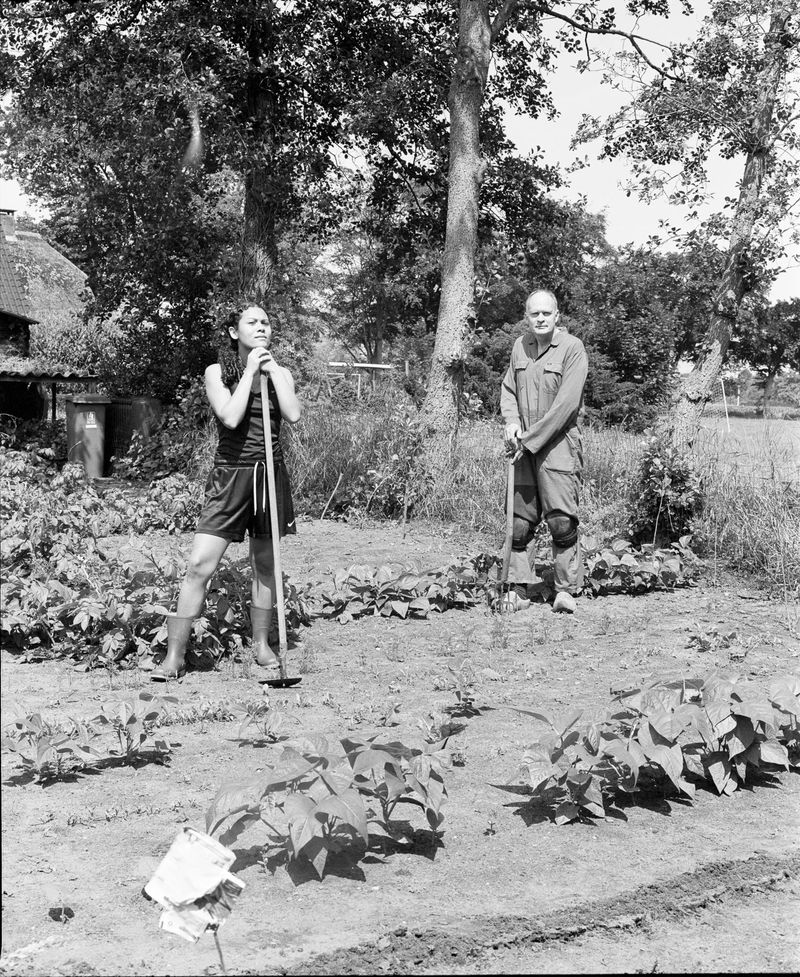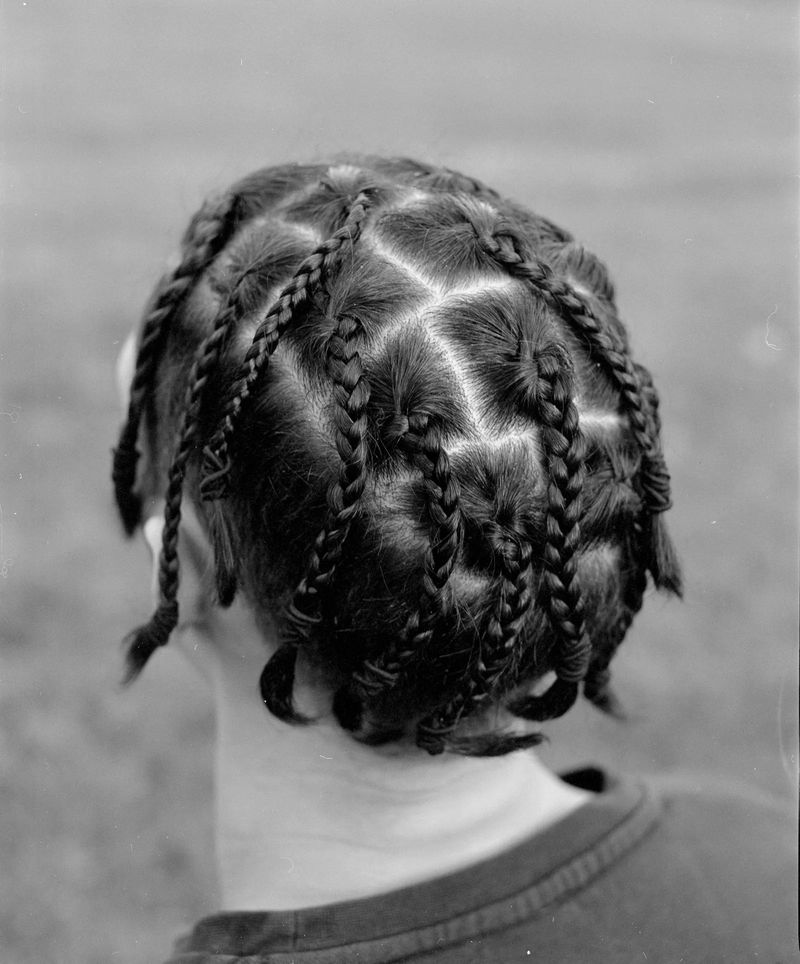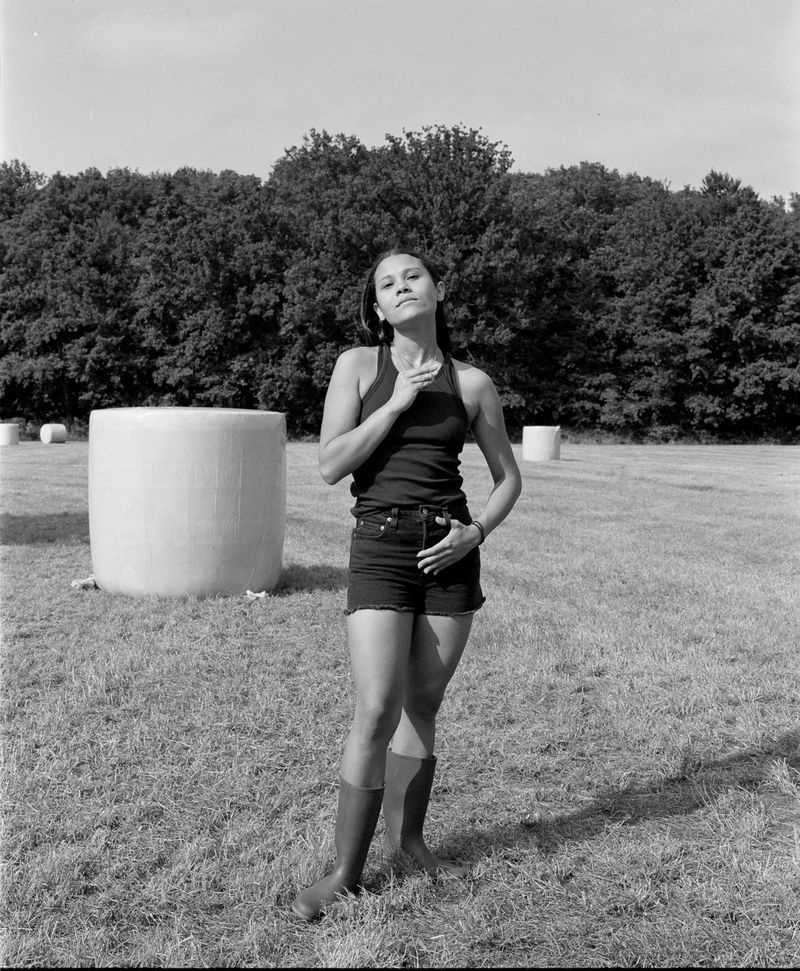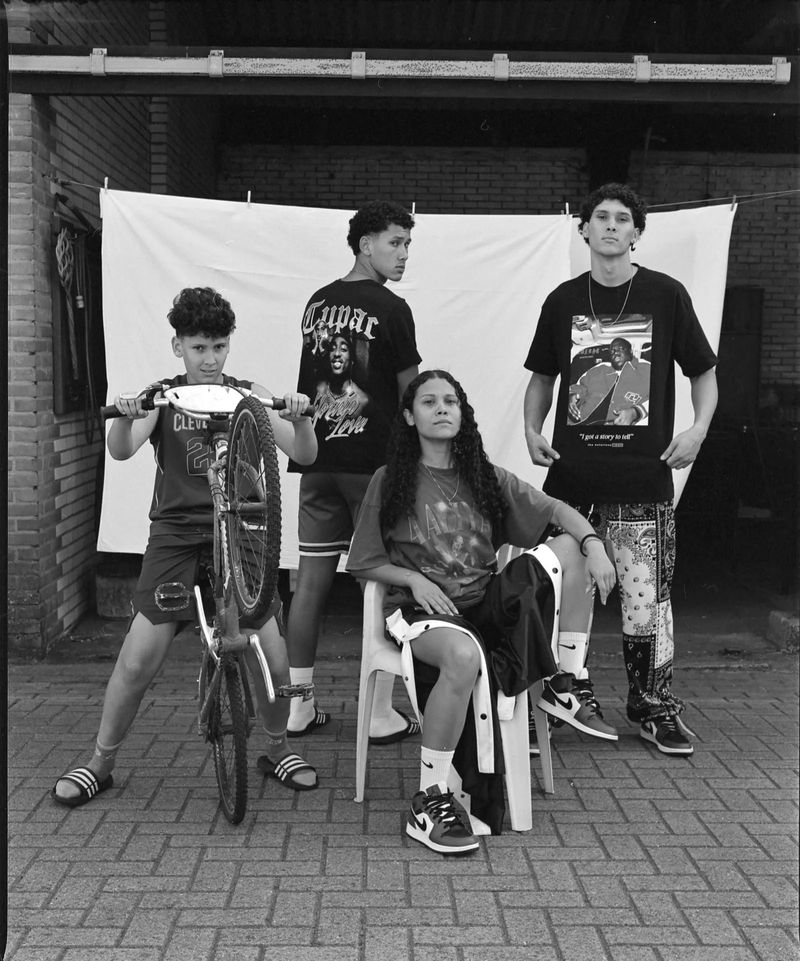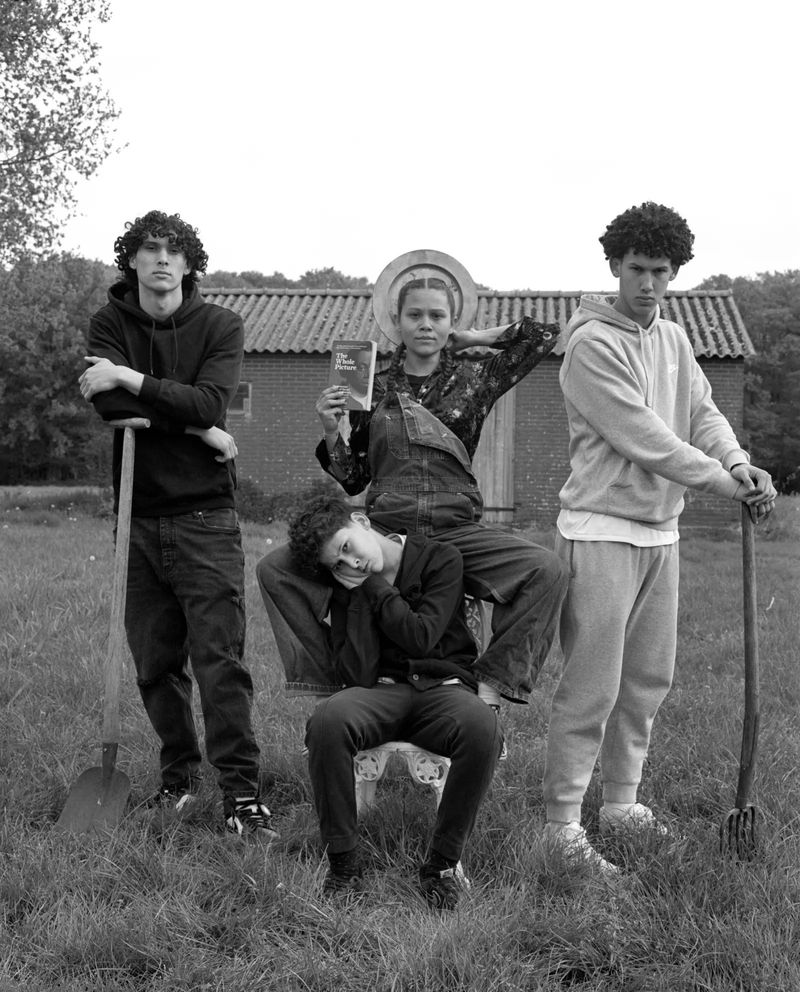Farren van Wyk Explores Being South African in a Dutch Landscape
-
Published15 Jun 2023
-
Author
Mixedess is My Mythology displays scenes of daily life on a Dutch farm while delving into the significance of being South African in such a contentious terrain.
In the photographs that compose Mixedess is My Mythology, Farren van Wyk illustrates the many moments that make up everyday life and work on a Dutch family farm. They are mostly performed by the young South-African woman she is, and by her siblings, presenting a dramatic contrast between the space, the landscape, and those who inhabit it.
We see two farmers (van Wyk and her stepfather) posing with shovels in a vegetable garden. We see the old pig shed and the tractor shed, a majestic walnut tree, the arched roof barn, overalls hung to dry, the clogs they wear, misty mornings over the land—all typical Dutch agricultural elements that stand in stark contrast with the physicality of the people that occupy those same spaces: their dark, tick curled hair, intricate braids, sneakers and durags, urban hip hop clothes—and culture—speaking of different roots and sense of identity. We’re presented with the landscape of a typical Dutch farm, inhabited by a South African and Dutch young woman.
This prism which reflects the multiplicity of elements around her, becomes a reflection of van Wyk’s own identity, fractured first, then recomposed, at the center of Mixedess is My Mythology.
In some ways, the farm exemplifies a hybrid background where numerous identities converge, particularly the family’s South African roots and their extended Dutch identities. “I realized that by Dutch standards, or what is perceived as a Dutch person, we very much do not look like that. But we live on a very stereotypical Dutch farm,” van Wyk explains. That's how it started: “finding ways to put me and my brothers in the landscape.”
Two images depict the similarities and differences between the two cultures, with van Wyk emboding this contradiction, acting as a common denominator. In both photographs, she's striking the same pose while standing in a field, wearing all black in one, all white in the other; curly hair or straight hair. In one, she’s similar to The Birth of Venus; in the other, she represents the Nigerian goddess Oshun from African folklore—both symbols of love and femininity, birth and fertility, which van Wyk emphasizes with the ‘land’ as her background.
“I always thought that my identity needed to be split,” she says of past struggles. “We live in a world of globalization, and you can travel all over the world and be wherever you want to be, but our ideas of who is Dutch, who is South African, who is American, are quite small,” she adds. “What I can do is just to be who I want to be.”
The two pictures accurately express the work's title: The ‘mixedness’ of two identities, Western and African cultures, finding elements of commonality in their myths and folklore. “I thought [that] if our identity is not just one thing and it can be the story that we make of it, we can create our own identity. So we are creating our own mythology,” van Wyk says. “Mixedness, my mixed identities, are my way of telling my own story, telling my own myth.”
From this sense of awareness, Mixedess is My Mythology expands beyond the perimeter of the farm, tapping into the past and the future. For long, van Wyk has considered what it means to be a person of color in the Netherlands, which has long grappled with a tense history of colonialism, slavery, apartheid with South Africa, the imposition of western layers of identity on indigenous people.
In one photo, she’s posing with a golden plate high over her head, her brothers standing in close proximity, modern disciples nearby a modern Virgin Mary. With a touch of playfulness, it’s a subtle depiction of the imposition of religion (and language, and identity) upon African and Afro-American people. In one hand, van Wyk holds a book, The Whole Picture by Alice Procter, which takes a look at the colonial history of art in museums, opening up a discussion on the construction of a national narrative of identity, who controls it, and what it should represent, all themes that find full expression in Mixedess is My Mythology.
“When it comes to the work, this project is very much my visualization of how I feel, that I can mix my identities together and they blend,” van Wyk says. Photography, she believes, is the medium through which this unity will be realized. “Within this project, I'm dealing with myself and I can be who I want to be.”
All photos © Farren van Wyk, Mixedess is My Mythology
--------------
Farren van Wyk is a South African and Dutch photographer based in The Netherlands. The crux of her work is to portray people of color with dignity and make it a normality. Find her on Instagram and PhMuseum.
Lucia De Stefani is a writer focusing on photography, illustration, culture, and everything teens. She lives in New York. Find her on Twitter and Instagram.
--------------
This article is part of the series New Generation, a monthly column written by Lucia De Stefani, focusing on the most interesting emerging talents in our community.
